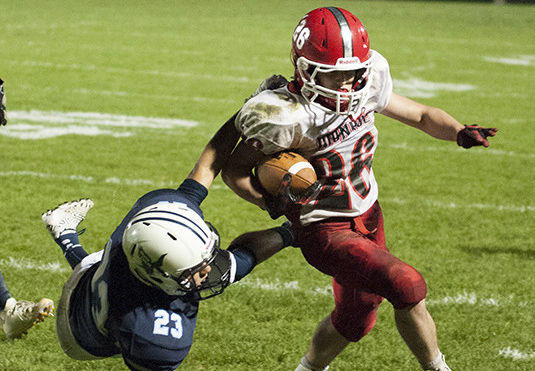5 components of a strong off-season training program
January 3, 2024 / Athletic Administration • Coaching • Football • Player Safety • Strength & Conditioning
The main purpose of the off-season training schedule is to help improve your on-field performance. For field sport athletes such as American football that means balancing a whole array of different training qualities.
You might think that it is enough to spend your off-season in the weight room comfortably working on strength alone and believing that this will increase your performance. However, this is far from the truth.
 A recent story from American Football International detailed the necessary components for having a successful offseason strength and conditioning program.
A recent story from American Football International detailed the necessary components for having a successful offseason strength and conditioning program.
Below is an excerpt from the American Football International story.
- Speed
The number one component of any strength and conditioning program is to increase our speed. Speed kills. The reason speed is the number one priority is for a concept known as a “speed reserve” which is a term conceived by Derek Hansen. Similar to strength, if we push our 1RM (1 repetition max) squat up, then 75-85% of that 1RM is higher than somebody with a lower 1RM. For the person with a lower 1RM to match the intensity of the stronger person, he needs to operate at a higher relative intensity. - Plyometrics
Plyometrics are number two because I view them as a specialized strength for sprinting. Plyometrics incorporate a time demand (rebound time) for you to develop sufficient force (power) as opposed to strength training in which, theoretically you have unlimited time to lift your weight. You should be working on a variety of plyometrics based on your position. Keep them varied, keep them fun. - Agility
Agility is different from the change of direction if you’ve read my previous article “Stop wasting your athletes’ time.” Agility involves something known as perception-action coupling. This means we perceive something (a running back approaching us) and we determine an appropriate course of action to prevail in the situation. This is a bit of a gray area since some might argue that we get this stimulus from our sport. However, most Europeans are likely underdeveloped from a lack of reps, so the more situations in which you are working against other people, the better. - Strength
Most of us all know and love strength training. Getting under the bar and squatting or benching a little more each week is important. The reason strength coaches and coaches in general love strength training is because it is easy to understand and compare. Athlete A squats 100 kg and Athlete B squats 13 0kg. Coaches, or strength coaches believe athlete B has more potential for on-field performance. While strength is extremely important as it is the foundation for creating a robust body that can cope with the demands of training and sport, it is still limited in terms of transfer.
